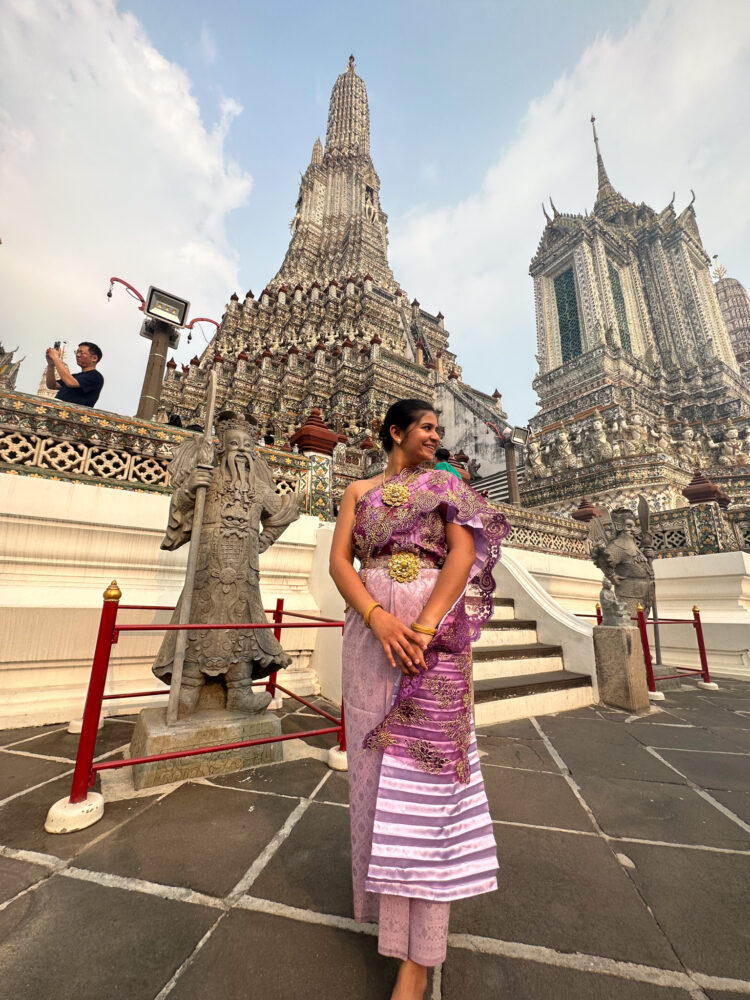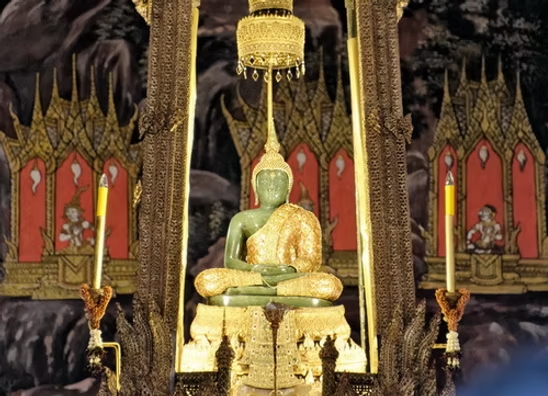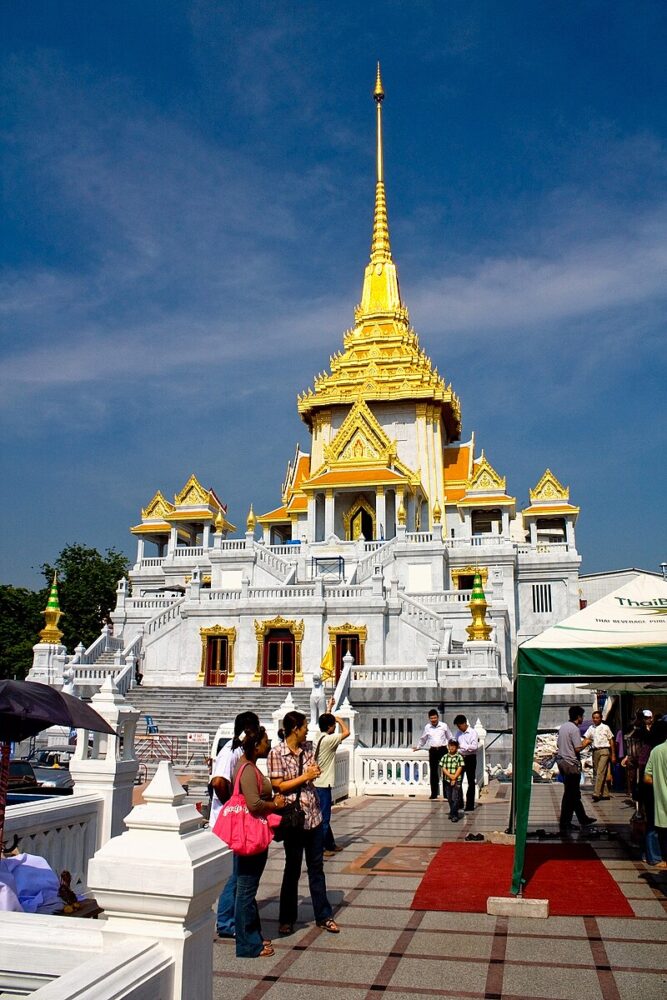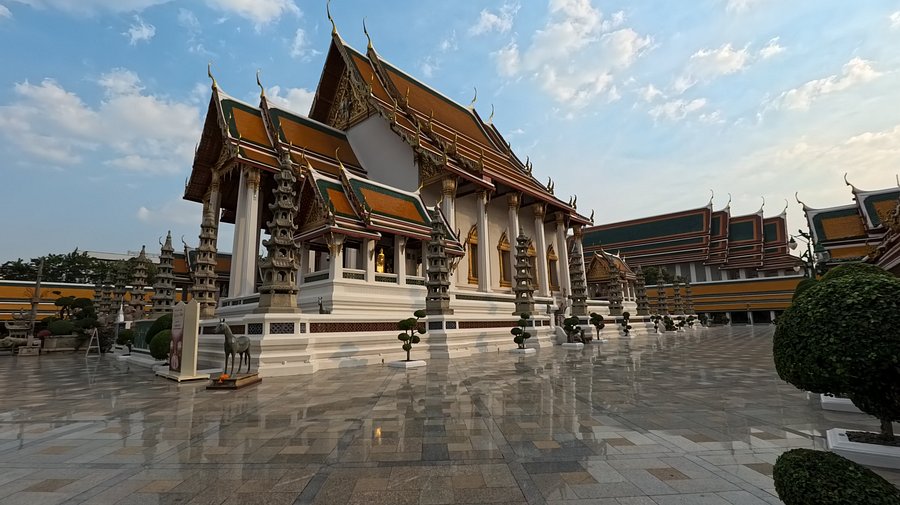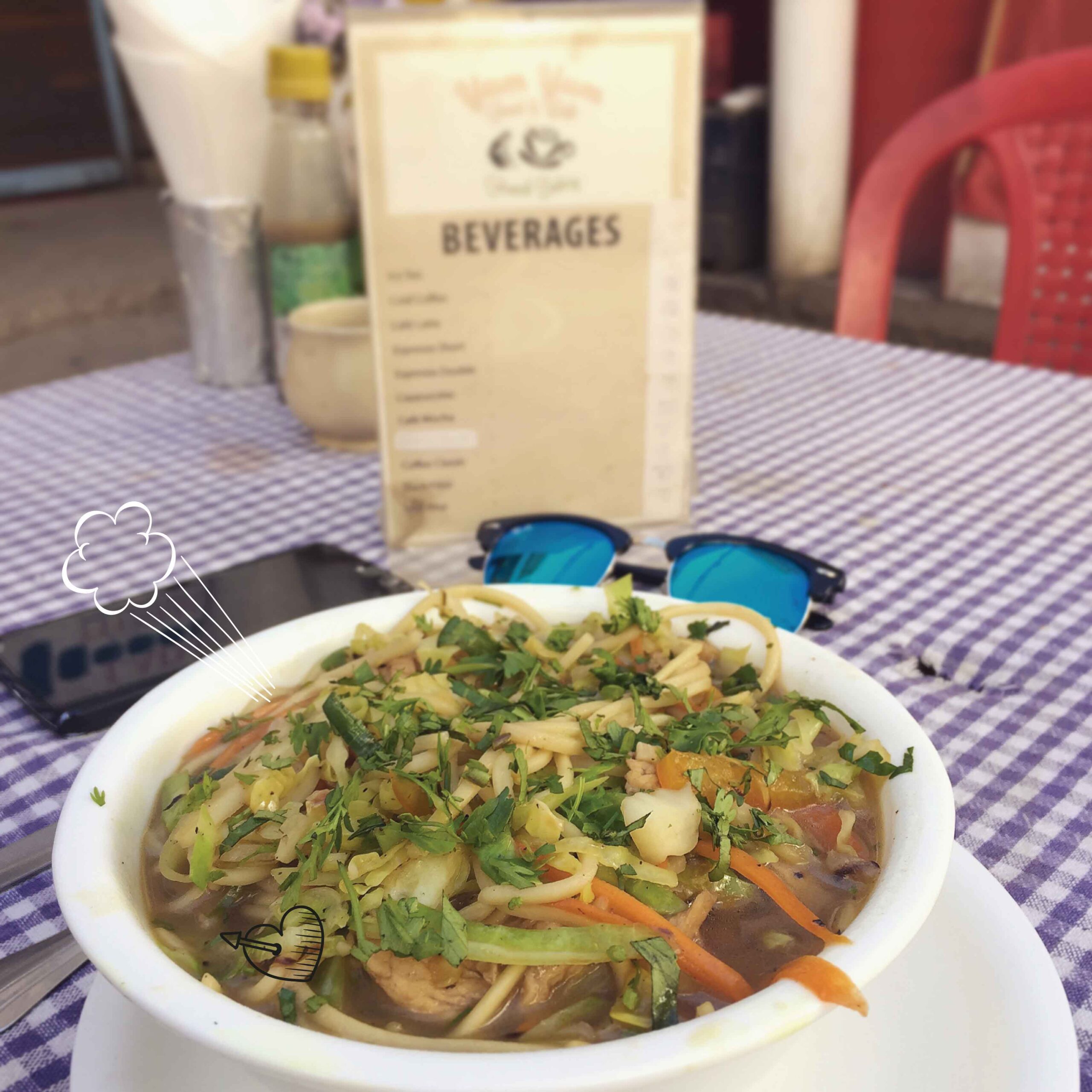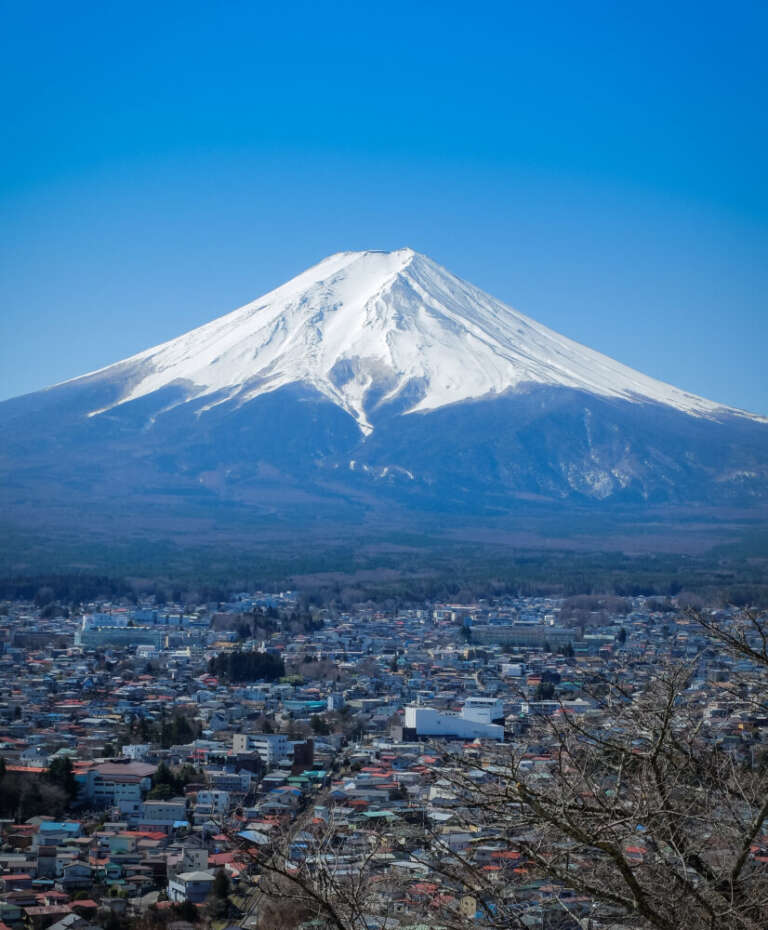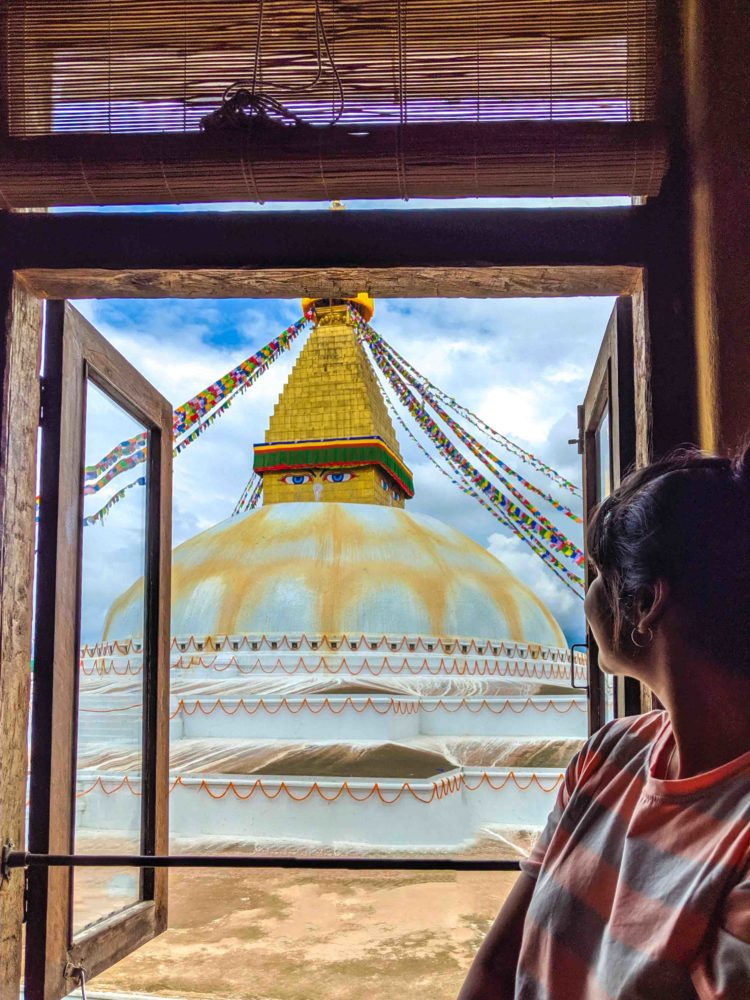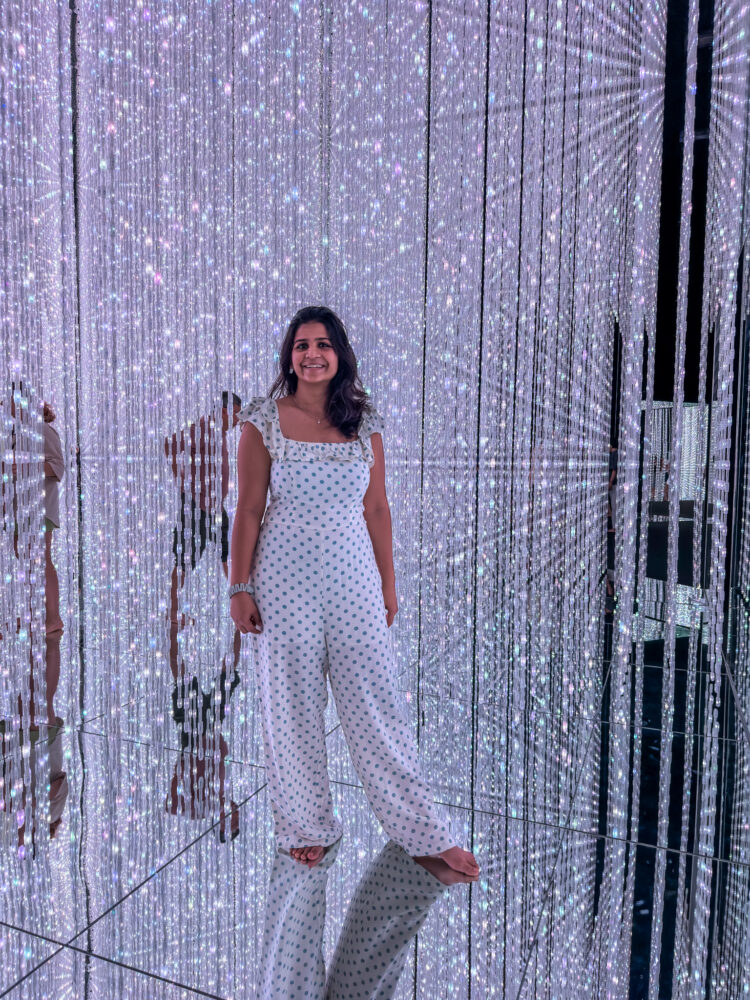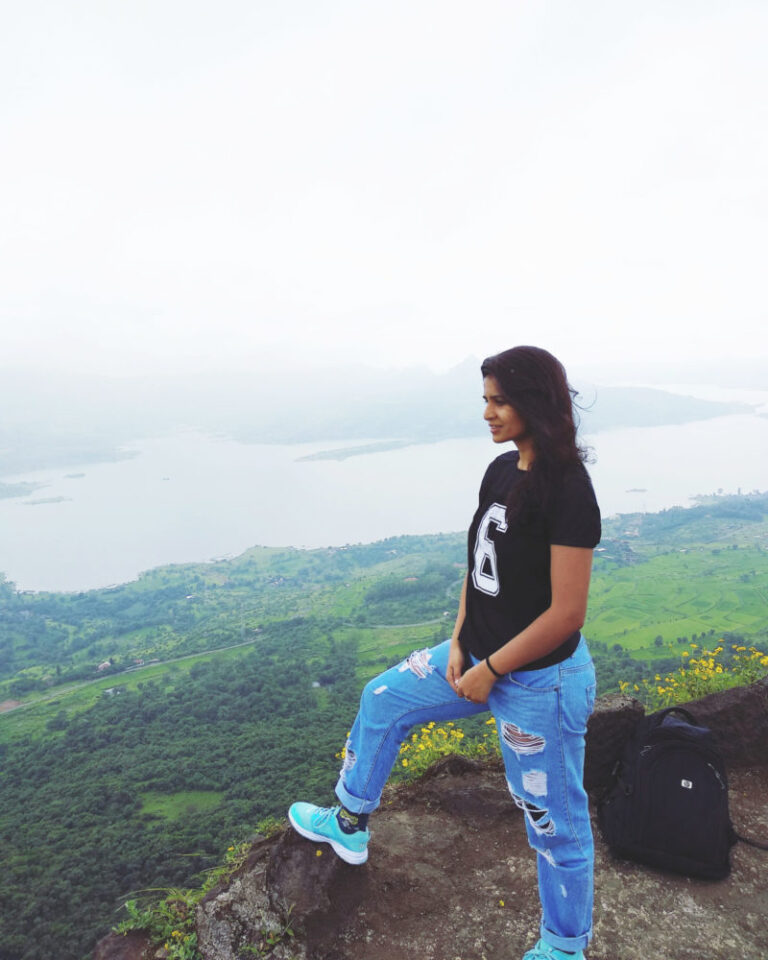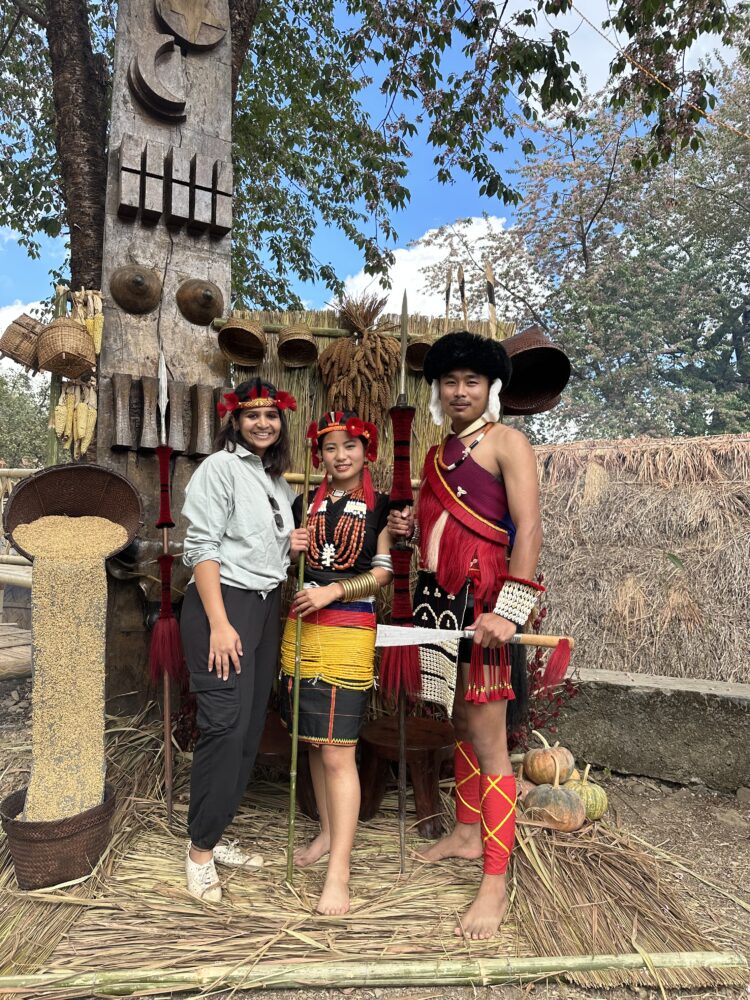10 best temples in Bangkok
Introduction
Thailand is an excellent choice for a getaway if you want a spiritual experience rather than just partying. Thailand has a whopping 40,000 temples in total, with 4,000 of them right in Bangkok. That’s why Bangkok is considered a holy place where you can immerse yourself in the beautiful art and culture. In case you didn’t know, Thailand is a deeply religious country, with around 92% of the population being Buddhists. To understand Thai culture truly, you should visit some temples. And if you want to explore temples, Bangkok is the perfect place. Many first-time visitors head straight to the famous temples like Wat Phra Kaew and Wat Arun, but there are plenty more to discover.
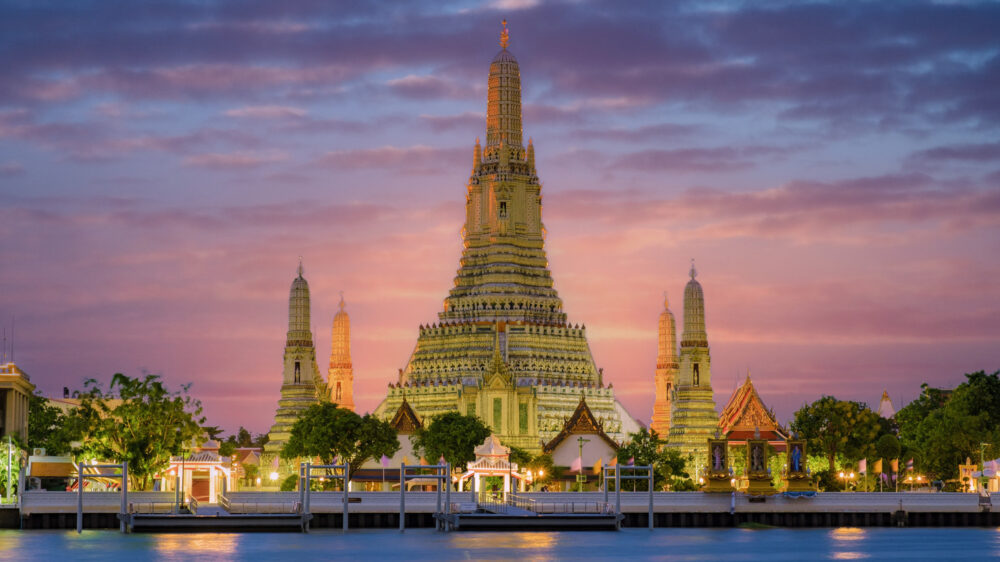
Wat Arun
Wat Arun, a Buddhist temple built in the 17th century, is a famous temple with its staggering architecture, located on the west bank of the Chao Phraya river. This place is not only famous for its location on the bank of the river but for its stunning architectural design, which is unique from all the other temples in the whole capital and this temple has a rich history, unlike others. The’Temple of dawn’ is another name for Wat Arun, so the ideal time to visit this temple is during the sunset to avoid touristy crowd.
Furthermore, due to the heartfelt and pleasant location, you can also enjoy the night city lights with a beautiful view of the Grand Palace.They have a visiting hour of 8:30 am – 5:30pm.To enjoy the view and explore this beautiful temple, 1-2 hours is enough for the time being, which costs 100 Baht. Another captivating exploration here is, one can try climbing the pagoda for a view from the top or you can go to the opposite side of the river bank from Wat Arun to enjoy the view of the temple.
Considering, the reaching part to Wat Arun is very feasible, the nearest BTS train station is Saphan Taksin station and another way is tourist boats, taxis and bus.
The temple of Emerald Buddha
The Emerald temple is also recognized as Wat Phra Kaew, which is one of the most important Buddhist temples in Bangkok. This temple is located on the grounds of The Grand Palace and is open from 10 am to 2 pm with audio guides, available in all languages. This temple has a spiritual value, so the dress code should be strictly followed, for example, no see-through clothing is allowed for both men and women as they adhere to a strict dressing code to enter the holy ground and there shouldn’t be any bare feet as well. Lastly, the entry fee is included with the ticket to The Grand Palace, which costs around 500 baht.
Wat Pho
Wat Pho is the largest and oldest holy temple of the Buddha community built in the 16th century. It is home to a gold-plated reclining Buddha statue which is 46 m long and 150 feet tall. This temple is also home to a 394-gilded image of Buddha with
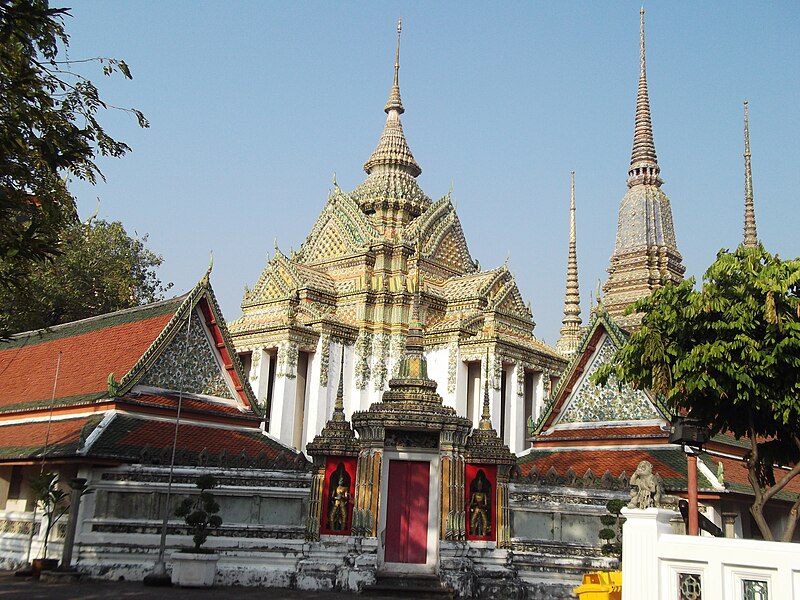
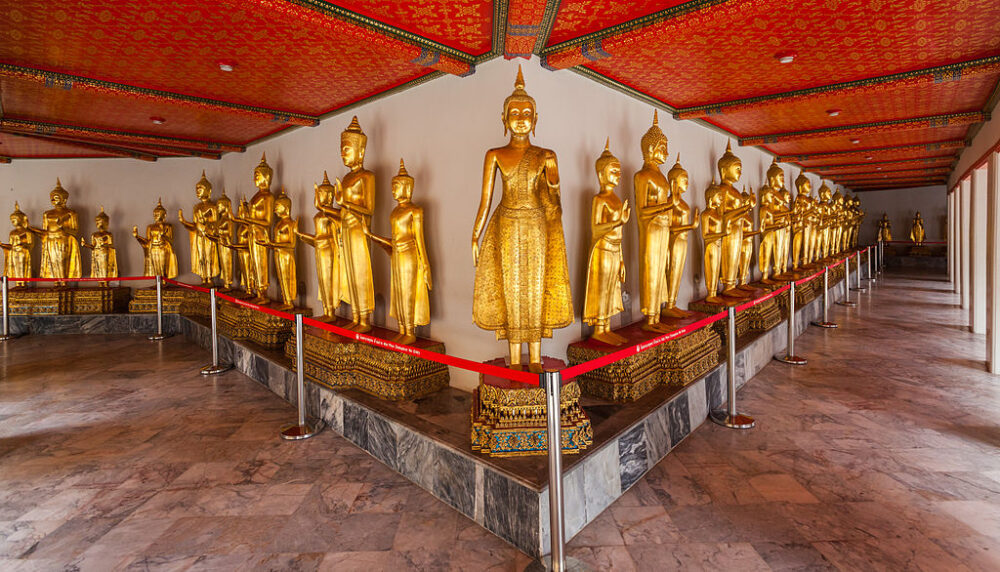
4 chapels in its complex. It is the best place to wander around to experience a restored walk around the verdant green beauty or can explore the stunner artwork and stonework done in this temple.
The visitors’ timing is same as Wat Arun from 8:30am to 5:30pm and the ideal time to visit will be early in the morning to avoid touristy crowd as the rush starts from afternoon. Also, 200 baht is an entry fee for international tourists. Furthermore, the best possible way to reach this location is by river taxis. Which is reasonable in cost and cuts out all the city traffic. If one wants to explore the hush-push of the city and the oldest MRT, so, Sanam Chai station is nearest to Wat Pho, which includes an 8-minute walk.
Wat Traimit
Wat traimit, a temple built in 18th century by 3 Chinese people in the locality of famous Chinatown area, making it a very famous location to explore other local attractions. Wat Traimit is a very auspicious and royal temple of this area and is mainly known for gold seated Buddha statue, that is made of 5.5 tonnes of gold. The temple of gold Buddha is another name for Wat Traimit, in which, the statue is five meters tall and is 700-800 years old which enshrines solid gold. The temple is deeply ornate, with very attractive interiors, featuring golden shimmery and white style wall artifacts and carving including the exteriors.
Also, Wat Traimit has a museum on the 3rd floor which explains the rich history of the Golden Buddha and how this statue was found in the 13th century. Moreover, there’s a concise video presentation of the Buddha images and the history of sculpture in the temple. The second floor has detailed 3D presentations of Chinese traders in Bangkok.
The best time to visit here is again in the morning or afternoon between 8 am to 5 pm, when the place is little not too crowded. The entry charges to this temple is 40 baht, so, spare at least 2-3 hours to experience this glory. ]Getting to this historical site is easy, if you are in Chinatown, one can a take a tuk tuk as it cost you cheap. MRT blue line can drop off to Hua Lamphong station from where its a few minutes walk.
Wat Saket
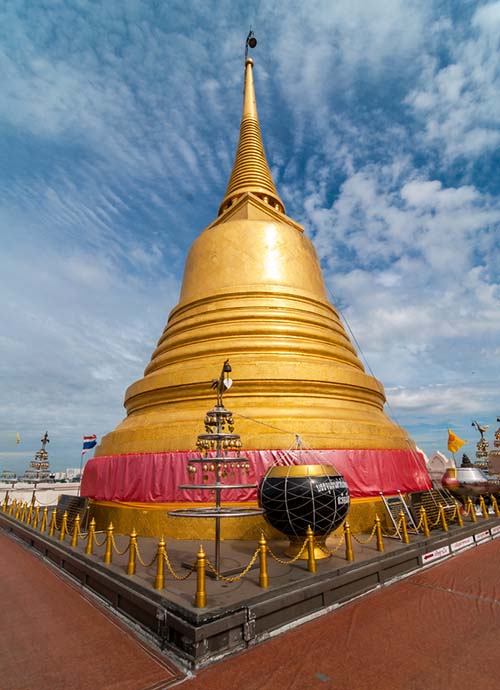
Wat Saket, a temple located in Bangkok’s old town also known as ‘Golden Mount’, occupies man made 80 meters tall hill which was built during the reign of King Rama 3. To get to the top, 300 steps needs to be climbed that surrounds the Chedi. Wat Saket is a sacred pilgrimage site for Thai people, especially during the month of November. Although, visitors are welcomed all year long. But due to this festive season in November known as Loy Krathong happens every year, there is a prayer event held up for a week long which is the most busiest time of the year. This week is followed with relic Buddha worshiping ceremony and a lot of temple fairs which include decorative flags, food vendors, colorful lanterns, an outdoor space for games and rides. This is a major attraction of the year to cover and the only time to explore this culture closely and in detail.
A spooky fact about this place is, at the base of Golden Mount, you’ll notice an unfamiliar ground which was a cemetery in the 18th century, a dumping ground of 60,000 dead bodies ‘a victim of plague’. Now this ground is covered with overgrown trees, vines. Anyways, when you climb to the top of the Wat Saket you have an amazing panoramic view of Bangkok old city. Moreover, this temple is beautiful from its interiors and exteriors with lush greenery, prayer halls, ordination rooms which are typical Buddhist structure.
The best time to visit here is in the morning and it is open all year long from 8 am to 5 pm, the entry costs around 50 baht. You can reach here by taxi, bus or MRT, the nearest MRT station is Sam Yot. From there, Wat Saket is just 10-15 minutes of walk.
Loha Prasat
Between Wat Saket and Khao san road, there is a holy temple of Thai but not much recognized as others. This is Loha Prasat temple, which has a unique designs and architectural identity, which standouts own. Loha Prasat is also known as ‘metal castle’ because of construction done in such a way that it is supporting 3 metal spires which represent 37 virtues towards enlightenment. Loha prasat temple is inspired from two temples namely India and Srilanka , the temple is made with multiple coordination squares levels built on allinged pillars. The last is the highest level which has a relic of Buddha. There are many such beautiful alleys by the pillar, where you can explore the exhibition and history of holy temple. It will show how the temple was restored by the order of the Thai royal family when it was falling apart.
Gold seated Buddha, extravagant door carvings and beautiful murals along with Buddha statues market are not to miss off. There are many beautiful side walks to wander around the fort and streets. Moreover, Wat Saket is at the nearest distance from Loha Prasat by walking, so traveling is same as Wat saket. lastly, cross the road and behind the white wall of an ancient fort you can find wooden house village to explore underrated place.
Wat Mahathat
A beautiful Buddhist temple located in the middle of nature exactly opposite of the grand palace in the city of Bangkok named Wat Mahathat. This temple is a holy, most significant and oldest in the history of Ayutthaya as it housed the Buddha’s holy relic. The disclaimer here is, this place was used in hosting a lot of royal ceremonies of the Ayutthaya era. When this era ended in the year 1767, the Wat Mahathat was destroyed with fire and in many other ways. Since then this place has been abandoned and converted into a archeological heritage site. Today, the temple is situated within the Ayutthaya Historical Park. Key points of interest within Wat Phra Mahathat of Phra Nakhon Si Ayutthaya encompass the remnants of significant ancient structures, including pagodas, octagonal pagodas, a royal hall, minor temples, murals beneath a Bodhi tree, and the renowned sandstone Ayutthaya-style Buddha head embedded in the roots of a tree.
This place is very rustic and defines the essence of nature’s spirituality. To feel and explore you’ll need to pay an entry fee of 50 baht.
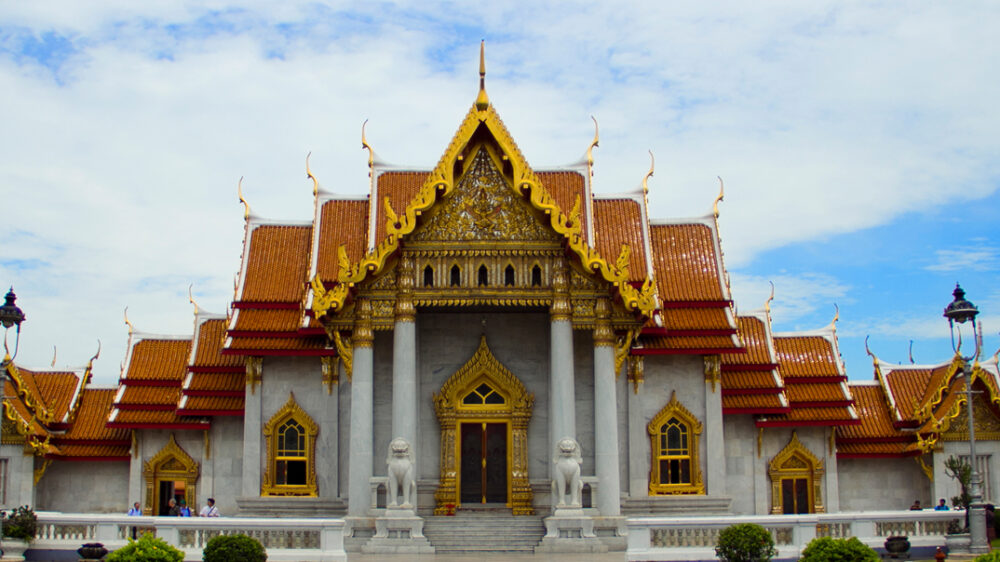
Wat Suthat
Wat Suthat is again one of the oldest and most important Buddhist temples like others but this can be said as the prettiest temples of all. Situated in Bangkok’s historic Old Town, Wat Suthat Thepwararam boasts an elegant prayer hall featuring sweeping roofs, magnificent murals, and exquisite hand-carved teakwood door panels. One of its prominent features is the towering red Giant Swing at the entrance. This temple is well-known and can be conveniently visited alongside the Temple of the Emerald Buddha, The Grand Palace, and Wat Pho. Inside the main prayer hall of Wat Suthat, you’ll find wall paintings that depict the previous 24 incarnations of Buddha. Along the temple’s outer walls, there are Chinese stone sculptures and 8-tier hexagonal pagodas. It’s believed that these sculptures were brought on Chinese trade junks.
Don’t miss the renowned Giant Swing at Wat Suthat, especially if you’ve already explored the Grand Palace and Wat Phra Kaew. The covered courtyard that surrounds the main prayer hall is adorned with approximately 156 Buddha images, and the outer walls and four entry gates are meticulously hand-carved with complex details.
Wat Benchamabophit

Wat Bencamabopit is a remarkable and most beautiful temple in whole Bangkok, which is also known as ‘the marble temple’. This temple is again built by a king named as King Rama V, it resides exactly next to Duscit Palace.This early 19th century temple is still active where the monks have a living area separated by temple across the canal. This temple is located inside the complex of royal temples with many such surrounding galleries which has beautiful displays of 52 Buddha and a Buddha tree bought from Bodhgaya, India to showcase the crowd. Interesting fact about this Buddha tree is, it has utmost importance as from this tree itself Buddha god reached enlightenment.
In the ordination hall, there is an image of Buddha which is the copy of original marble Buddha from Phra Buddha Chinnarat, located in Phitsanulok province. On the left and right side of the Buddha, there are so many niches paintings which indicate the importance of stupas across Thailand. The entrance itself is a testament to its grandeur, adorned with magnificent marble pillars, while the courtyard boasts shiny marble flooring. This temple stands as a spectacular exemplar of Bangkok’s architectural skills, showcasing a multi-tiered roof, walls adorned with golden and white decorations, and windows adorned with intricate gold carvings. Its high-end roof contributes to a delightful experience of art and aesthetics. Additional structures in the vicinity of the Wat include the abbot’s residence and a bell tower.
Visiting the temple incurs an entrance fee of 20 baht per person, and it is open from 8 am to 5:30 pm. You can easily access the temple via various modes of transportation, including tuk-tuks, metered taxis, BTS trains, and the MRT.
Wat Chakrawat
During the Ayutthaya period, the Chao Phraya River used to be home to crocodiles. However, due to an incident, a crocodile was spared and found refuge on the grounds of Wat Chakrawat. Today, there are three live crocodiles that roam around the temple. Interestingly, one of these crocodiles was originally bought by a person named Ai-bod, and its descendants still live here. Apart from the crocodiles, there are other unique features in this temple. For instance, the ordination halls face west towards the Grand Palace. In mondop, you can see the relic of Buddha’s footprint and also the preserved stuffed body of Ai-bod next to the mondop.
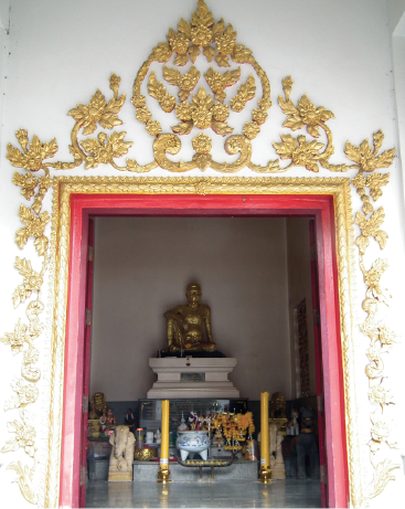
Interesting facts about Wat Chakrawat
- There’s a statue of a formerly fit and handsome monk who, despite his monastic vows, attracted the attention of many women. To make himself less attractive, this monk overindulged in food, and you can find his statue near the reclining Buddha statue.
- Inside the temple complex, there is a small cave with a wall that bears the shadow of Buddha in black. Worshippers pay their respects to this Buddha shadow. The crocodile pond is also located nearby, next to the mound where the mondop stands. It is situated in the same locality of Chinatown where Wat Traimit is located, so travelling would not be an issue.

